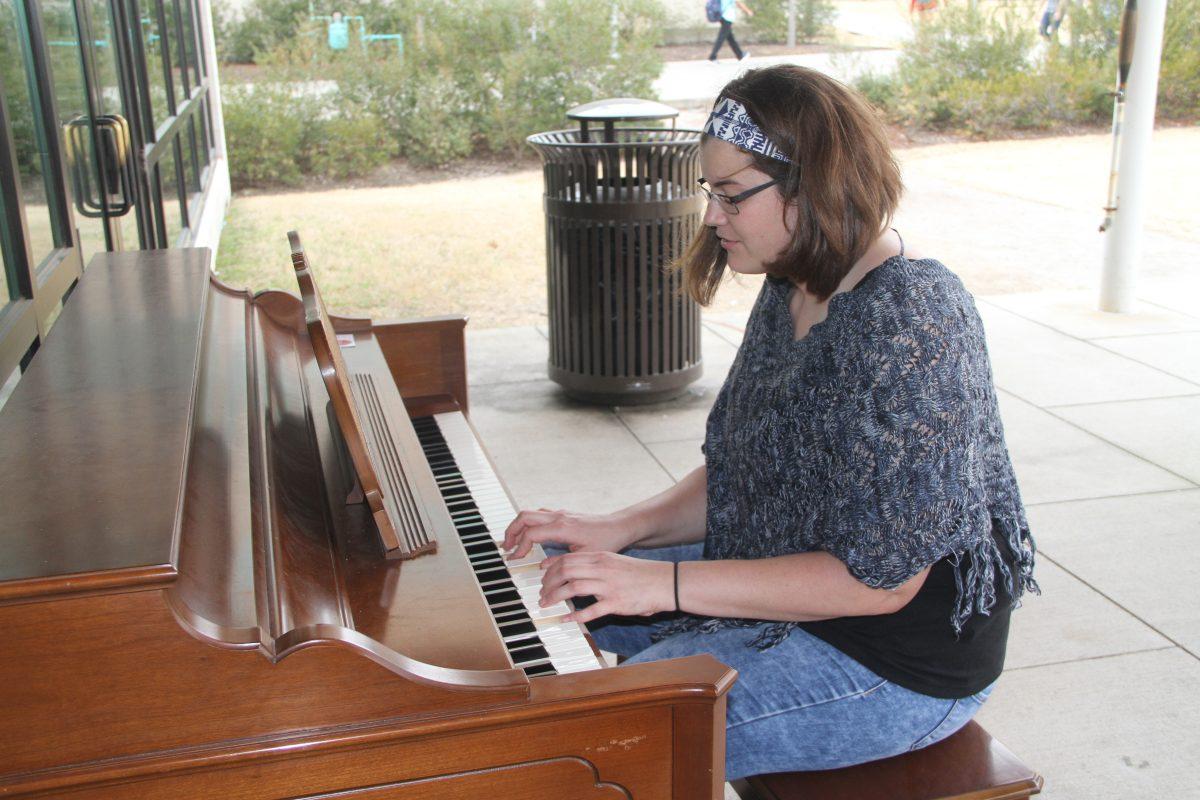The Student Government vice president is implementing three projects around campus to increase the presence of art at UTD.
Alex Holcomb, SG vice president and economics junior, said the art initiative could help students become more well-rounded from their UTD experience.
“As a liberal art major, I think it’s no secret that arts and performance is underrepresented at our school,” he said. “The goal with the art initiative is that it not only gives a place for arts majors to display their work, but that the finance major or the mechanical engineering major who maybe does some art on the side can feel comfortable expressing that.”
Holcomb placed a piano outside the Student Union near the food truck area as the first step towards his art goals. He said the piano was an important step towards improving the lives of art and performance majors.
“The largest complaint out of the performing arts was that there wasn’t enough space for performing, or even practicing, really,” he said. “We just wanted to create another space for them to come up and perform.”
The piano is estimated to last for about five years because of aging and weathering. Holcomb said if student support was high enough, then more pianos could be distributed on campus.
Holcomb also has two other works in progress as a part of his art initiative. One is a mural on the JSOM building with geometric shapes forming the letters UTD. The mural is expected to go up on the building’s north wall by the end of February. The idea for the mural came from a graduate art student’s capstone project.
“We had been talking about trying to get more art on campus, so this seemed like a really good idea,” Holcomb said.
For the other project, he wants to have student-produced art rotating in and out of a gallery in the SU.
“What I’m trying to do is have a committee made up of faculty and students that will curate and approve art to be put up in the SU,” he said. “We can probably get around 18 spots for art made by students that we can rotate out on a semesterly basis or something like that.”
The biggest challenge is the time spent working through the bureaucracy, Holcomb said. Even when the proposals and policies are approved, it still takes a significant chunk of time for the plan to actually be put in motion, he said.
However, he said the responses from the students and faculty has been overwhelmingly positive.
“Honestly it’s been such a warm reception … it’s beyond what I would have hoped,” he said. “When I send emails regarding a policy, faculty will email back, critiquing me, but also saying that they really love this project and they want to be kept updated, and that just gives me hope because I know that this will be carried on by other students and faculty even after this administration.”







